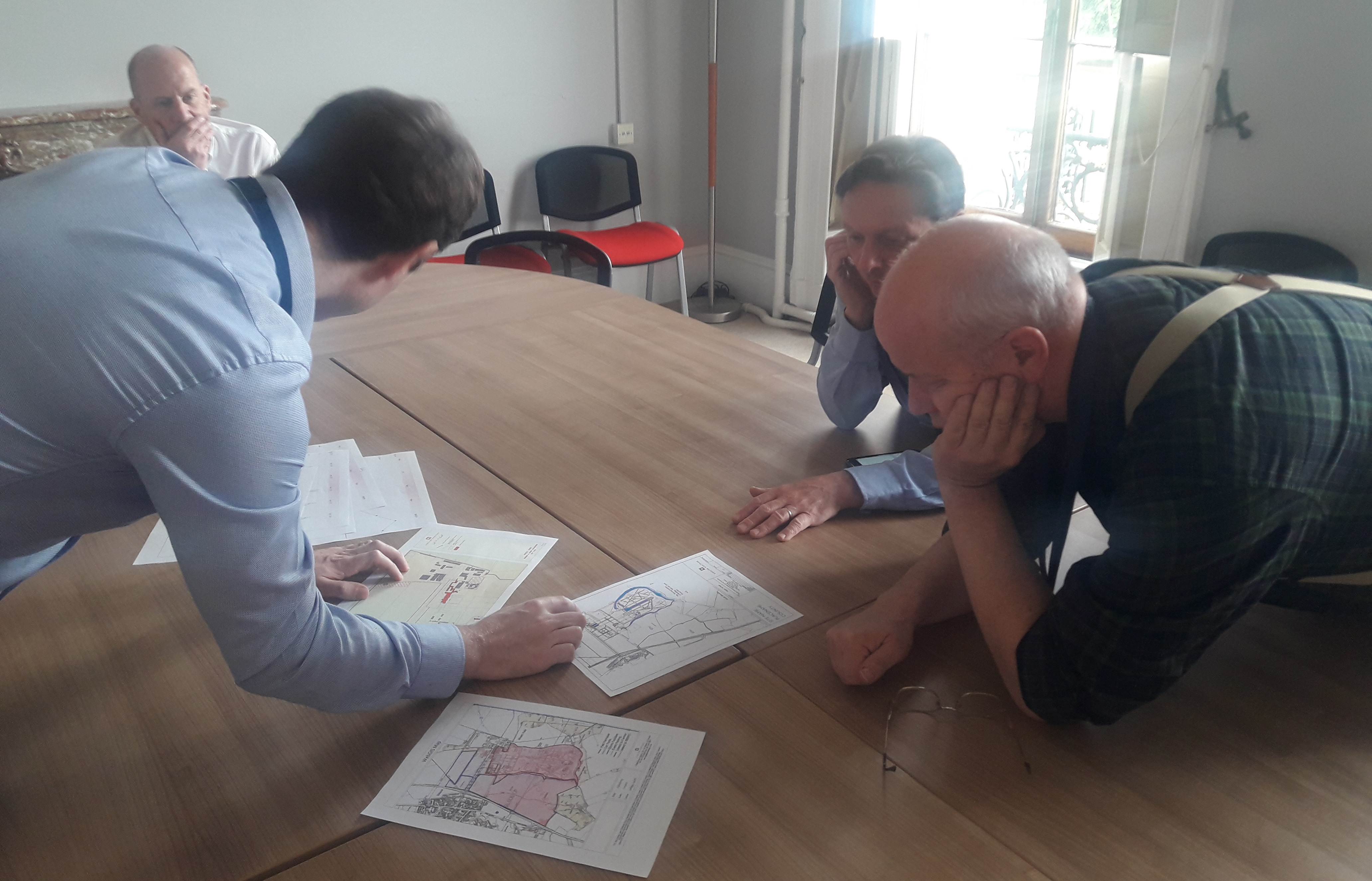The Challenge
Wrest Park, located in Bedfordshire, includes a Grade I listed country house and over 90 acres of gardens. It is currently a blank canvas in terms of environmental sustainability with the key challenges being:
- The site is heated by oil and has a single pipe heating system in the mansion that allows limited temperature control. Mike wants to eliminate oil from the estate and be able to better control temperature.
- English Heritage has a 15% energy reduction target for their whole portfolio, and Wrest Park is number 3 in terms of individual site consumption. Reductions at the park could therefore contribute significantly to achieving the overall reduction target.
Peer-powered solutions
Stuart and Tony went round the site with Mike and the Wrest Park Facilities Manager.
First of all, by studying the energy consumption graphs the group identified that a large proportion of energy use came from the site tenants. This opened up discussion around the opportunity to engage with tenants, and how possible billing changes could bring down costs for English Heritage.

The team also discussed various options for removing the large oil tank that currently provides the property with heating -gas is difficult to bring on site, but it was agreed that there is potential for renewable energy: a ground source heat pump and further solar PV. The group shared some of their negative experiences of other technology, which is a great example of the honest knowledge sharing element of the network that always proves very helpful.
LEDs were highlighted as a key priority, and Tony and Stuart shared their expertise on various lighting companies that can deal with some of the specialist lighting found in historic properties. They also discussed ways to manage the costs of installation.
The benefits of savings on maintenance (i.e. changing light bulbs using expensive scaffolding) can be as much as £8000 a year by switching to LEDs!
Tips were shared on effective methods for draught-proofing that doesn’t affect the sensitive fabric of the building, as well as the ideal humidity levels for collections.
.jpg)
And finally, everyone got to have a good poke around at the back of house – always an interesting experience! It also meant that further opportunities for savings were identified, particularly around insulating certain areas where there was a lot of heat loss and potential locations for renewable energy technology.
For more peer power, check out National Trust and Historic England’s visit to Lambeth Palace, or this link-up between CAFOD and NUS. Peer reviews are one of the many benefits that we deliver to our members. Find out what else we offer, and how to gain a nationwide support network of fellow environmental practitioners by joining us.